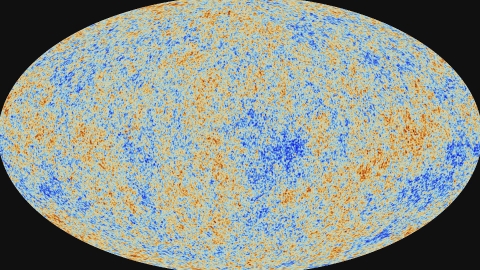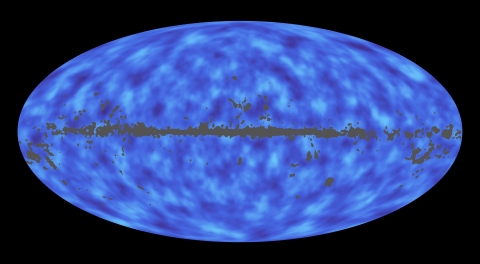This map shows the oldest light in our universe, as detected by the Planck mission. Click on the map for a larger image.
By now the Big Bang theory is widely accepted scientifically. The idea is that the universe began to expand rapidly about 14 billion years ago from a dense, hot state and continues to expand to this day.
One of the most telling fingerprints left behind by the Big Bang is cosmic microwave background radiation. This thermal radiation was thought to be left over from the Big Bang itself. It fills the universe almost completely.
A new map of cosmic radiation questions some of the core concepts of the Big Bang. What if, this precise heat map suggests, the Universe experienced a long, pre-Bang phase? What if the Big Bang wasn’t the first burp of creation after all?
The European Space Agency’s Planck spacecraft measures between infra-red and radio waves, making it possible to see back in time to the first light ever produced.
Cosmologists released the new images of the early universe this week. What surprises them is that Planck detected stronger light signals on one half of the sky than the other and picked up a series of anomalies or “cold spots.” While this doesn’t challenge the Big Bang theory as a whole, it does heighten the mystery around the universe’s birth and development.
The data is still coming in. Like the Human Genome Project, Planck stands to generate double the amount of data it has produced so far.
This full-sky map from the Planck mission shows matter between Earth and the edge of the observable universe. Regions with more mass show up as lighter areas while regions with less mass are darker. The grayed-out areas are where light from our own galaxy was too bright, blocking Planck’s ability to map the more distant matter. Click the map for a larger image.
Some other surprises from the Planck spacecraft data:
• The universe is about 100 million years older and appears to be expanding much slower than previously thought
• There is less dark energy and more matter in the universe than previous research showed.
Related Content:
Leonard Nimoy Narrates Short Film About NASA’s Dawn: A Voyage to the Origins of the Solar System
Carl Sagan, Stephen Hawking & Arthur C. Clarke Discuss God, the Universe, and Everything Else
Google Presents an Interactive Visualization of 100,000 Stars
Kate Rix writes about digital media and education. Contact her and learn more about her work at .




Leave a Reply